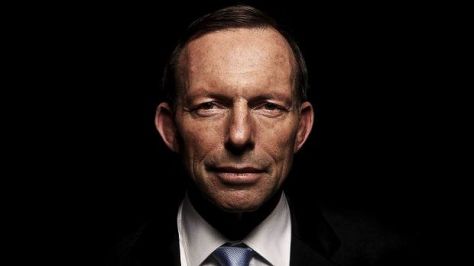IPCC release Fifth Assessment Synthesis Report
Former NASA scientist predicts ‘dark winters’ ahead
Over the coming weeks Jamie’s Pages will be presenting a series of articles on climate change and the environment. The first of these articles looks at how the issue of climate change is covered in the Australian media.

One of the most pressing issues facing the world today, and arguably the one that will affect us most into the future, is that of climate change. Does climate change even exist, and if so, how much can be attributed to human beings and industrialisation, and of course, what must we do to arrest it before it is too late?
Although the implications of climate change may be dire in the extreme, or not exist at all, depending on which side of the debate one leans toward, we as citizens should have access to any, and all information available on the subject – from both sides of the debate.
However as much of Australia’s mass media is controlled by those whose interest’s conflict with addressing the issue, much of the coverage is either biased, inadequate, or both.
In 2013, The Australian Centre for Independent Journalism (ACIJ), released a report on the coverage of climate change in Australian media from February to April in 2011, and in the same period during 2012, and found that a third of Australian newspapers articles, either completely rejected, or cast serious doubt on the science of climate change.
Indeed, the report’s author, Professor Wendy Bacon, said at the time that, “Australia may well have the highest concentration of climate scepticism in its media in the world.”
News Corp, who own 70 percent of Australia’s print media were by far the most vociferous in their scepticism, with their biggest three publications – the Daily Telegraph, Herald Sun, and Australian leading the charge. The Herald Sun was particularly biased in its coverage, with a staggering 97 percent of commentary dismissing the issue of climate change completely.
Just as concerning was that only 11 percent of articles published on climate change actually referenced peer-reviewed climate science, and that 25 percent of all articles that made significant mention of climate science were less than 150 words long.
To make an educated appraisal of whether climate change is real or not, at least some of the science behind the issue must be explored, yet how can that be legitimately accomplished given so much biased and inadequate information is being published by our mass media.
The Media Entertainment & Arts Alliance Journalists’ Code of Ethics states in its first point that journalists should, “report and interpret honestly, strive for accuracy, fairness and disclosure of all essential facts, and not to suppress relevant available facts, or give distorting emphasis.”
Much of the coverage associated with climate change ignores this point, and as such, fails in its primary obligation to its readers.
Associate Professor of Journalism at UTS and ACIJ director Tom Morton stated at the time of the report’s that the results were “truly alarming”, and that, “The report clearly demonstrates that important and influential sections of the Australian media are failing in their responsibility to provide their audience with information they need to make informed choices on a matter of vital public interest.”
Although the ACIJ report looked at the coverage of climate change in two separate periods as recently as 2011 and 2012, much has changed in the Australian political landscape since its’ 2013 release.

During the two periods the investigation was being conducted, a Labour Government led by Julia Gillard was in power, and a carbon tax was in place. Now 12 months after the report’s release, a Liberal Government, led by Tony Abbott – a renowned climate change sceptic – has recently ‘celebrated’ its first anniversary in office. One of Mr Abbotts, primary election promises was to abolish that carbon tax, which he has now done.
So has this change in the political climate, made any difference to the way in which climate change is covered by the Australian media?
Looking at a range of articles on climate change published in Australian media since the ACIJ report was released late in 2013, it would appear not. While News Corp news articles on new climate change developments are reasonably balanced, the vast majority of articles are still opinion pieces, almost all sceptical, if not totally disdainful of climate change science, with very little, if any evidence backing them up.
Conversely, while Fairfax publications may offer more insight, and cite more sources in their articles, they too fail to a degree as far as a balanced coverage is concerned. There are occasions when they do not report on new developments that may give weight to the argument that climate change does not exist. Or that even if it does, we, and industrialisation are not responsible. News Corp publications on the other hand, will pounce on such a development, even giving it extensive coverage.
An example of this is an article that appeared in the Weekend Australian on August 23rd of 2014. In the article, Jennifer Marohasy – a biology researcher from Queensland – accuses the Bureau of Meteorology (BoM), of, “manipulating temperature records to fit a predetermined view of global warming.”

The accusation comes after Marohasy spent two years researching “temperature records noted in historic logs that date back through the Federation drought of the late 19th century.” While the Bureau disputed the allegation, it did admit to ‘homogenising’ temperature records, a practice which it says, is commonly used internationally.
Although Marohasy is a self-confirmed climate change sceptic, her findings have been published in peer-reviewed climate science literature, yet there was no mention of her findings in major Fairfax publications.
Conversely News Corp covered it extensively, with the Australian publishing another three articles on the subject, on top of the initial one. Three written by the paper’s Environment Editor Graham Lloyd, and one opinion piece written by James Delingpole.
News Corp columnist Andrew Bolt, who is a well-known climate change sceptic, also wrote an article on Marohasy’s findings, which was published in both the Herald Sun and Daily Telegraph. Bolt is by far the most prolific News Corp columnist on climate change, writing literally hundreds of articles espousing his disdain of climate change, and attacking anyone with an opinion different from his own.
Since December of 2013, Bolt has written over 60 opinion pieces on climate change – all of them dismissive, and uses any evidence, real, flimsy or totally whimsical in an attempt to prove his point.
In an article titled ‘Godzilla the monster outwits the global warmists’, published in the Herald Sun in May, he attempted to connect the then recently released Godzilla film, with the argument against global warming. Reader comments posted below the article confirmed how ridiculous his argument was. A commenter named Andrew writing, “Next he will be talking about the next zombie movie being about conservative voters!”

While Andrew Bolt may be the most prolific writer of opinion pieces for News Corp debunking climate change, Tim Blair, Miranda Devine and Piers Ackerman also publish many columns on the subject in the Daily Telegraph and Herald Sun, as well as on their own blogs – all of them dismissive.
This sceptical viewpoint is not confined to News Corp’s tabloids, as their masthead paper, the Australian is also sceptical of climate change in the majority of its opinion pieces. Many are written by the previously mentioned James Delingpole, a British journalist and author, who also happens to be another renowned climate change sceptic, and who Andrew Bolt refers to as, ‘Britain’s mighty James Delingpole’.
Although the Australian also publishes a number of balanced articles on the subject, they have been accused of bias on the issue from various quarters for some time.
In 2010 Julie Posetti, who currently teaches journalism at the University of Wollongong, attacked the paper’s stance on climate change on social media during a panel discussion on climate change being held at UTS.
Criticism also came after a report released by an Australian Institute think tank, that found that, “during a three-month period, The Australian published opinion pieces or editorials as follows: nine for the government’s position and one against; 10 against Kyoto and one for; and 10 against the consensus view of the science.”
In response The Australian’s lawyers sent a letter to Posetti, demanding she retract the statements, and Environmental Editor Graham Lloyd, wrote an article referring to, and refuting the allegations of bias. Stating that contrary to a long standing belief held about the newspaper’s editorial position on climate change, “The Australian supports global action on climate change based on the science.”
The 2013 ACIJ report does back up Lloyd’s claims to some degree, with the study finding the Australian published 24 percent (the most of any publication), of all articles concerning climate change in the two three month periods looked at.

However the report also named The Australian as one of the three worst offenders when it came to negative commentary about the subject.
A look at articles published since the ACIJ was released shows that while The Australian does have many articles in favour of climate change, they are usually AAP articles, and none are written by Lloyd.
He tends to write on issues that are sceptical, such as those written on the theories of Jennifer Marohasy, and the majority of commentary published in The Australian is still negative.
By far the most balanced coverage coming under the News Corp umbrella is News.com.au. While there are still negative commentators on the subject, there are also many articles using science, either for or against, as the basis of the piece. One particular article titled, ‘10 simple points about climate change’, stood out, as it was one of the few articles on climate change that looked at the issue as a whole, and written simplistically, with a touch of humour, yet not dumbed down.
There are not enough of articles covering climate change written in this way that are easily accessible to the average Australian. The only way an educated decision can be made about climate change is through knowledge of the issue, and the science behind the decision, either for or against. It is up to journalists to unbiasedly convey scientific theories brought forward on the subject to the general public in a way that can be easily understood.
How many of us actually know what climate change and global warming is, and what causes it? When did scientists first discover it, and what is the global consensus amongst scientists on the subject?
Given the importance of the issue, these are questions we should all know, yet many of us do not, and instead base our arguments on opinion, rather than fact.
As previously mentioned Fairfax publications, such as The Sydney Morning Herald and The Age, have a far more balanced coverage of climate change than their News Corp counterparts. Their articles are generally longer, and cite scientific sources more often. Fairfax also have far less negative commentary on the issue. The same can also be said of climate change coverage from other media outlets, such as The Guardian, Crikey and The Conversation. All provide balanced and informative articles on climate change.
However as News Corp holds a 70 percent market share of print media in Australia, most Australians get their news from News Corp tabloids, and as has been shown, these particular publications fail in their duty to, “report and interpret honestly, strive for accuracy, fairness and disclosure of all essential facts, and not to suppress relevant available facts, or give distorting emphasis.”
This, says Professor Bacon, “should be a matter of great concern to the Australian public, governments, the scientific community and journalists.”
The next article in this series will look at what climate change actually is, whether it occurs naturally, how it occurs and what the possible consequences may be.









